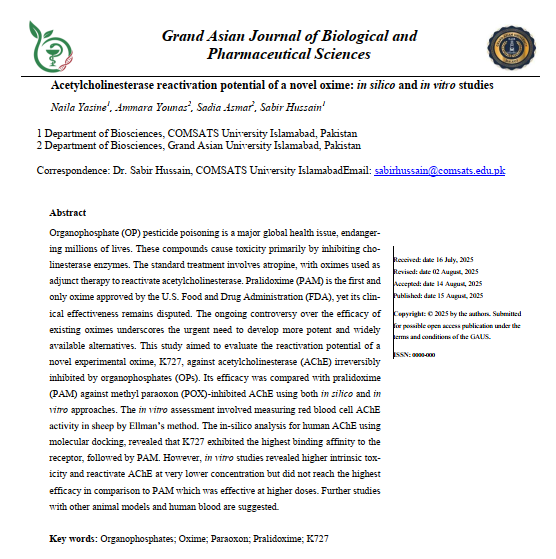Acetylcholinesterase reactivation potential of a novel oxime: in silico and in vitro studies
Keywords:
Organophosphates, Oxime, Paraoxon, Pralidoxime, K727Abstract
Organophosphate (OP) pesticide poisoning is a major global health issue, endangering millions of lives. These compounds cause toxicity primarily by inhibiting cholinesterase enzymes. The standard treatment involves atropine, with oximes used as adjunct therapy to reactivate acetylcholinesterase. Pralidoxime (PAM) is the first and only oxime approved by the U.S. Food and Drug Administration (FDA), yet its clinical effectiveness remains disputed. The ongoing controversy over the efficacy of existing oximes underscores the urgent need to develop more potent and widely available alternatives. This study aimed to evaluate the reactivation potential of a novel experimental oxime, K727, against acetylcholinesterase (AChE) irreversibly inhibited by organophosphates (OPs). Its efficacy was compared with pralidoxime (PAM) against methyl paraoxon (POX)-inhibited AChE using both in silico and in vitro approaches. The in vitro assessment involved measuring red blood cell AChE activity in sheep by Ellman’s method. The in-silico analysis for human AChE using molecular docking, revealed that K727 exhibited the highest binding affinity to the receptor, followed by PAM. However, in vitro studies revealed higher intrinsic toxicity and reactivate AChE at very lower concentration but did not reach the highest efficacy in comparison to PAM which was effective at higher doses. Further studies with other animal models and human blood are suggested.





